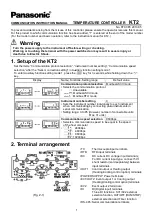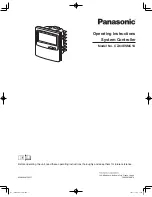
L-VIS User Manual
218
LOYTEC
Version 6.2
LOYTEC electronics GmbH
Repeat for additional data points, if the mail should be triggered by more than
one source. In case of multiple mail triggers, the mail is sent if any of the
conditions is met (as opposed to all conditions).
If required, select a single data point to be used as a master enable/disable switch
below the trigger list. If a data point is selected for enable/disable, its value must
be non-zero to allow mail sending. If no data point is selected, the mail template
is considered enabled.
10.9.3 Attachments
This tab is used to select files which should be attached to the mail. This is used for
example to send the current system log file or data log files together with the mail. The
available files depend on the project and can be selected from the dropdown list. Use the
Add
and
Remove
buttons to manage the list of attached files.
NOTE:
Data from trend log or data log controls can only be attached to a mail if the control has
the option Preserve Data enabled. Otherwise, the data is not saved in a file and is therefore
not accessible to the E-Mail system to include as a file attachment.
NOTE:
Attaching a number of large files will require a significant amount of free memory while the
mail is being composed and sent. If the project itself consumes most of the available RAM,
this should be taken into account. If necessary, split the information into multiple smaller
mails and send them at different times to reduce the memory requirements.
10.9.4 Limit E-mail Send Rate
The transmission of e-mails is triggered by the configured trigger conditions. It is not
predictable, how often the trigger condition will cause the transmission of an e-mail. The
e-mail template can be configured to limit the number of transmitted e-mails. This is done
in the Configure E-mail Template dialog.
To configure an E-mail Rate Limit, configure the settings:
Max. E-mails per day
: This setting defines how many e-mails can be sent on
average per day. The actual number of transmitted e-mails on a specific day may
be slightly higher than this setting, depending on burst rates. The default is 100 e-
mails per day. This results in an average interval of one e-mail per 14 minutes.
Send burst count
: This setting defines how many e-mails may be transmitted
shortly after each other not limited by the above average interval. After the burst
count, the average mails per day limit takes effect. The default is a maximum of
20 e-mails in a row.
10.10 Local Schedule and Calendar
10.10.1 Create a local Calendar
As the first step, the required data points must be created. A calendar must be created, if the
schedules shall work with exception days, such as ‘Holidays‘. If it suffices for schedules to
define daily schedules for normal weekdays only, no calendar needs to be created.
To Create a Local Calendar
1.
Under the port folder, select the
Calendar
sub-folder to create a calendar.
















































